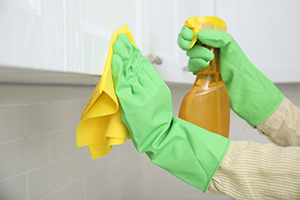 In the dynamic world of household and industrial cleaning products, the formulation of hard surface cleaners is undergoing a significant transformation driven by sustainability trends. As chemists tasked with creating effective cleaning solutions, understanding these evolving trends is crucial to meeting consumer demands and regulatory requirements while minimizing environmental impact. Here’s a detailed exploration of formulating hard surface cleaners with a focus on sustainability:
In the dynamic world of household and industrial cleaning products, the formulation of hard surface cleaners is undergoing a significant transformation driven by sustainability trends. As chemists tasked with creating effective cleaning solutions, understanding these evolving trends is crucial to meeting consumer demands and regulatory requirements while minimizing environmental impact. Here’s a detailed exploration of formulating hard surface cleaners with a focus on sustainability:
The Evolution of Sustainability in Cleaning Products: Consumers today are increasingly conscious of the environmental footprint of the products they use, including cleaning agents. This shift in consumer behavior has pushed manufacturers and chemists to rethink traditional formulations and embrace sustainable practices throughout the product lifecycle.
Key Trends in Sustainability:
- Biodegradable Surfactants: One of the most significant advancements in recent years is the adoption of biodegradable surfactants. These surfactants break down into non-toxic components after use, reducing their impact on aquatic ecosystems compared to traditional surfactants.
- Reduced Environmental Impact: Formulators are focusing on reducing the overall environmental impact of cleaners by minimizing phosphates, opting for renewable raw materials, and ensuring products are easily biodegradable. This approach not only benefits the environment but also aligns with regulatory standards aimed at protecting water quality and biodiversity.
- Packaging Innovations: Sustainable packaging solutions, such as using recycled materials and designing for recyclability or compostability, are becoming integral to cleaner formulations. Chemists play a pivotal role in selecting packaging materials that minimize waste and maximize resource efficiency.
- Energy and Water Efficiency: Cleaner formulations are increasingly designed to be more energy and water-efficient during manufacturing and use. Concentrated formulations that require less packaging and lower transportation emissions are gaining popularity, reducing the overall carbon footprint of these products.
ULTRUS™ helps companies work smarter and win more, with powerful software to manage regulatory, supply chain and sustainability challenges. Learn more here!
Formulation Strategies for Sustainable Hard Surface Cleaners:
- Choosing Sustainable Ingredients: Opt for ingredients derived from renewable resources or those certified as sustainably sourced. Examples include plant-based surfactants, natural solvents like ethanol derived from biomass, and bio-based chelating agents.
- Avoiding Harmful Additives: Phosphates, chlorine bleach, and other harmful chemicals are being phased out in favor of safer alternatives that maintain cleaning efficacy without compromising environmental safety.
- Enhancing Biodegradability: Ensure that the formulation breaks down readily into non-toxic substances after use, minimizing its impact on ecosystems and waterways.
- Performance Testing: Sustainability should not come at the expense of cleaning performance. Rigorously test formulations to ensure they meet efficacy standards while adhering to sustainability principles.
Regulatory and Consumer Expectations: Regulatory bodies worldwide are increasingly implementing stringent guidelines regarding the environmental impact of cleaning products. Chemists must stay abreast of these regulations to ensure compliance and anticipate future standards. Additionally, consumer preferences for eco-friendly products continue to drive market demand, making sustainability a competitive advantage in the cleaning industry.
As chemists in the household and industrial cleaning industry, embracing sustainability isn’t just a trend—it’s a responsibility to safeguard the planet and meet the evolving expectations of consumers and regulators alike. By integrating sustainable practices into the formulation of hard surface cleaners, you can contribute to a cleaner, healthier environment while maintaining high standards of performance and safety. Embrace innovation, collaborate with suppliers of sustainable ingredients, and lead the charge towards a more sustainable future for cleaning products. Together, we can make a lasting impact on both cleanliness and environmental stewardship in homes and industries worldwide.
The views, opinions and technical analyses presented here are those of the author or advertiser, and are not necessarily those of ULProspector.com or UL Solutions. The appearance of this content in the UL Prospector Knowledge Center does not constitute an endorsement by UL Solutions or its affiliates.
All content is subject to copyright and may not be reproduced without prior authorization from UL Solutions or the content author.
The content has been made available for informational and educational purposes only. While the editors of this site may verify the accuracy of its content from time to time, we assume no responsibility for errors made by the author, editorial staff or any other contributor.
UL Solutions does not make any representations or warranties with respect to the accuracy, applicability, fitness or completeness of the content. UL Solutions does not warrant the performance, effectiveness or applicability of sites listed or linked to in any content.
